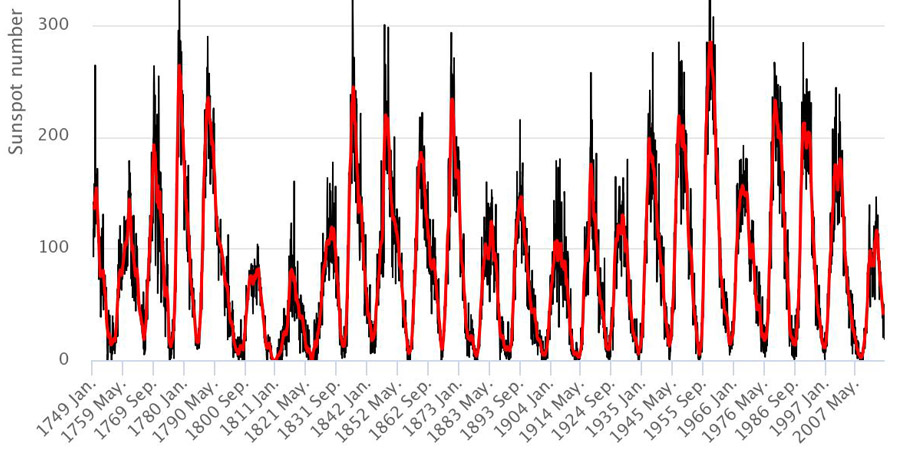Two new pages
Saturday, 7 January 2017 14:50 UTC

We are beginning the new year at full speed as we added two new pages on SpaceWeatherLive today.
Acronyms and abbreviations
The first page is an addition to our already extensive help section: a page detailing the most commonly used acronyms and abbreviations used in space weather. Acronyms and abbreviations are a common sight in space weather bulletins and they can be confusing if you aren't familiar with them. On this new page you will find a list of the most commonly used terms along with a short description. Do you think we missed an important acronym or abbreviation? Please let us know! You can visit the page by following this link.
Historical solar cycles
I'm sure you are already familiar with the solar cycle progression page but today we added a page with solar cycle data all the way back to 1749. That's when the extensive recording of solar sunspot activity began. A fun little tool to compare the current solar cycle with previous cycles. Don't you wish you we're in 1778 right now? Visit the page by following this link.

Thank you for reading this article! Did you have any trouble with the technical terms used in this article? Our help section is the place to be where you can find in-depth articles, a FAQ and a list with common abbreviations. Still puzzled? Just post on our forum where we will help you the best we can!
Latest news
Latest forum messages
More topicsSupport SpaceWeatherLive.com!
A lot of people come to SpaceWeatherLive to follow the Sun's activity or if there is aurora to be seen, but with more traffic comes higher server costs. Consider a donation if you enjoy SpaceWeatherLive so we can keep the website online!

Space weather facts
| Last X-flare | 2025/03/28 | X1.1 |
| Last M-flare | 2025/04/01 | M2.4 |
| Last geomagnetic storm | 2025/03/27 | Kp5 (G1) |
| Spotless days | |
|---|---|
| Last spotless day | 2022/06/08 |
| Monthly mean Sunspot Number | |
|---|---|
| February 2025 | 154.6 +17.6 |
| April 2025 | 147 -7.6 |
| Last 30 days | 128.8 -21.8 |


